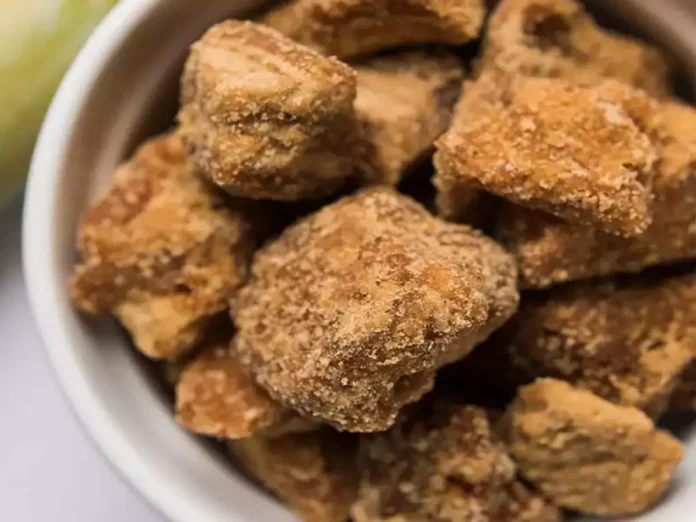Jaggery, a wholesome form of unrefined sugar, derives its variations from diverse production methods across regions, influenced by local customs and resource availability. In India, it is predominantly crafted from sugarcane juice or date palm sap, offering distinct flavors and nutritional benefits that appeal to health-conscious consumers. Payal Sharma, senior dietician at Dharamshila Narayana Superspeciality Hospital in Delhi, underscores the diversity in jaggery types, highlighting how regional traditions and local resources shape their production.
“India boasts numerous varieties of jaggery found in local markets,” Sharma explains, emphasizing that culinary practices and dietary preferences often dictate which type of jaggery is favored. This variety not only caters to individual tastes but also reflects the rich cultural tapestry of the country, where each region may have its preferred method of jaggery production.Sugarcane jaggery, commonly known as “gur,” remains a staple across many Indian households, valued for its earthy sweetness and nutritional content. It retains more of sugarcane’s natural minerals and vitamins compared to refined sugar, making it a preferred choice among those seeking healthier alternatives. Similarly, date palm jaggery, known as “nolen gur” in Bengal, offers a unique caramel-like flavor and is celebrated during winter festivals for its rich taste and warming properties.Other types of jaggery include palm jaggery, made from the sap of palm trees and renowned for its distinct taste and darker color profile. This variety is prevalent in southern India and parts of Southeast Asia, where palm trees thrive. Each type of jaggery undergoes specific production techniques that preserve its natural goodness, ensuring that consumers benefit from its antioxidant properties and lower glycemic index compared to refined sugars.Beyond its culinary appeal, jaggery serves as a versatile ingredient in traditional Indian sweets, beverages, and savory dishes, imparting depth of flavor and a hint of natural sweetness. Its integration into daily diets reflects a broader trend towards embracing natural, minimally processed foods that support overall health and well-being.As consumers increasingly prioritize nutrition and seek alternatives to refined sugars, the diverse spectrum of jaggery types offers a compelling option rooted in cultural heritage and nutritional benefits. Exploring these varieties not only enriches culinary experiences but also promotes sustainable dietary practices that align with both personal wellness and environmental stewardship.
Jaggery’s versatility extends beyond its culinary uses to encompass various health benefits recognized in traditional medicine. Its richness in vitamins and minerals such as iron, calcium, and magnesium makes it a valuable dietary supplement, particularly beneficial for individuals with iron deficiency or those seeking natural sources of these nutrients. Moreover, jaggery is known for its antioxidant properties, which help combat free radicals in the body and promote overall cellular health.
In Ayurveda, jaggery is prized for its ability to balance Vata, Pitta, and Kapha doshas, making it suitable for different body types and constitutions. It is often recommended as a digestive aid, helping to stimulate the secretion of digestive enzymes and improve gut health. The presence of sucrose in jaggery also provides a sustainable source of energy, making it a preferred sweetener for athletes and those leading active lifestyles.
Culturally, jaggery holds significant importance beyond its nutritional and medicinal value. It plays a central role in various festivals and religious rituals across India, where it is offered as prasad or used to prepare traditional sweets. Its use in these contexts underscores its symbolic significance as a symbol of prosperity, purity, and auspicious beginnings.
As awareness of health-conscious eating grows globally, jaggery has garnered attention as a natural alternative to refined sugars in various culinary applications. Its unique flavor profiles and nutritional benefits continue to inspire chefs and home cooks alike to incorporate it into modern recipes, blending tradition with innovation.
Looking ahead, the diverse types of jaggery and their respective benefits are poised to gain further recognition not only in India but also worldwide. As consumers seek sustainable and health-promoting food choices, jaggery stands out as a time-honored ingredient that bridges cultural heritage with contemporary dietary trends. Its journey from sugarcane fields to dining tables underscores its enduring appeal and relevance in today’s gastronomic landscape.

